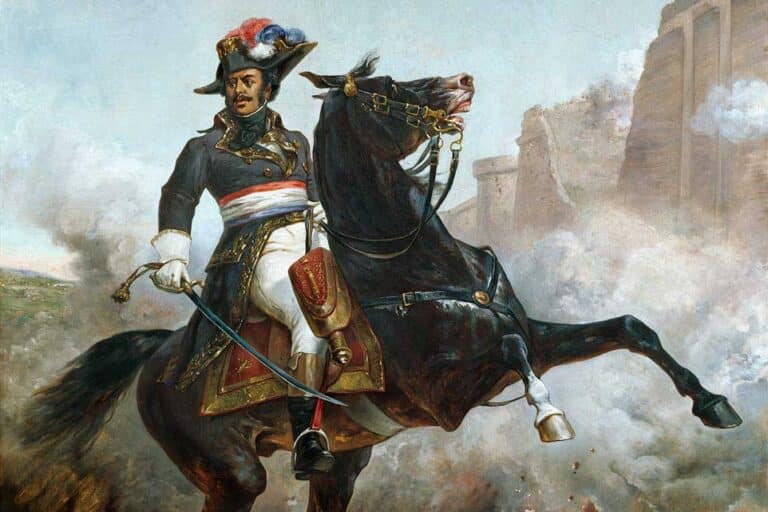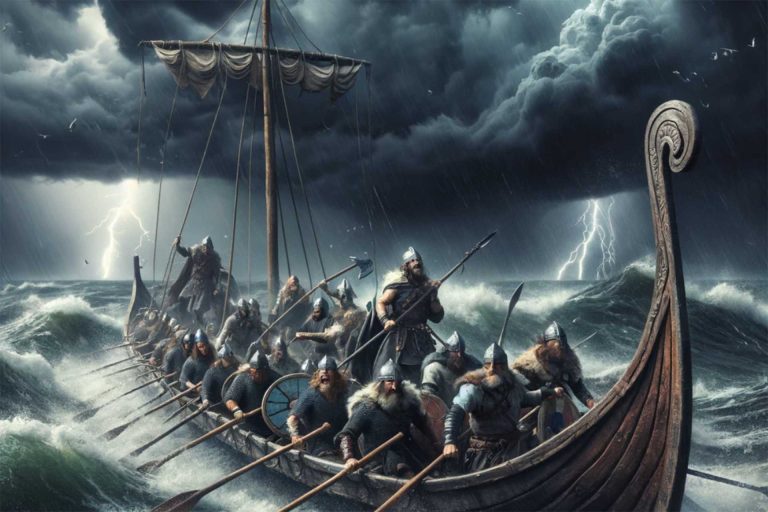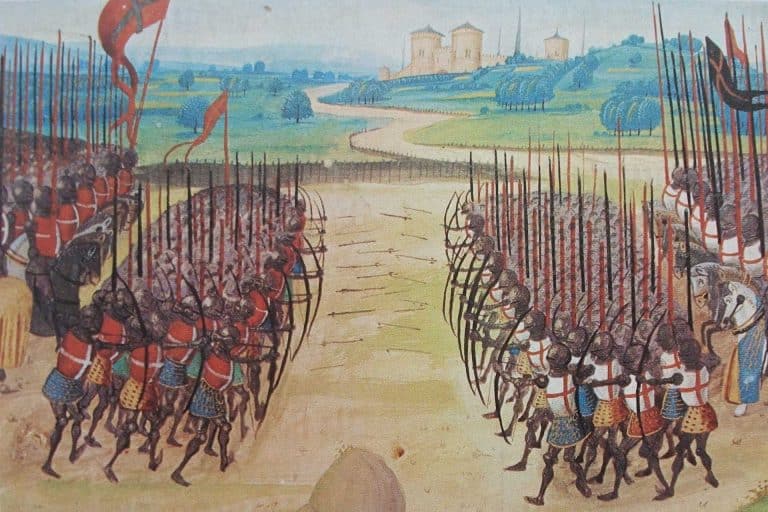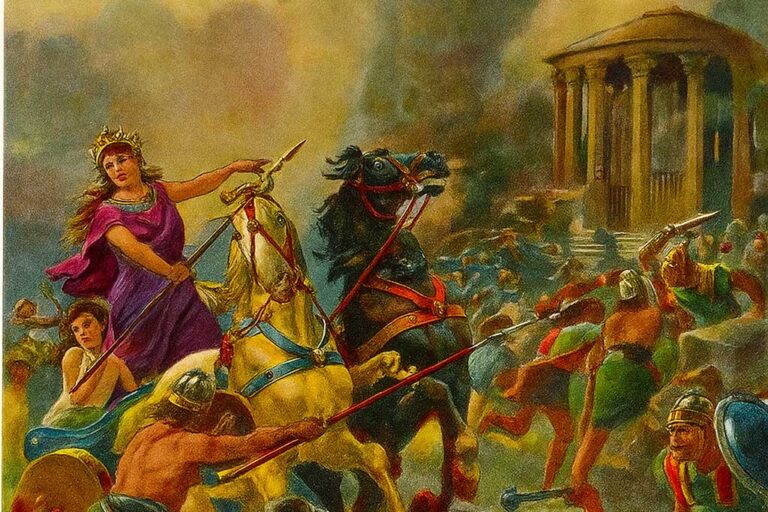The Real-Life Epic of Harald Hardrada: Viking, Mercenary, King
Harald Sigurdsson, better known as Harald Hardrada, “the Hard Ruler”, was a giant of a man, born into a world of blood feuds, berserks, and Norse sagas come to life. At the age of fifteen, he became a fugitive, hunted by men from his native Norway who had killed his half-brother King Olaf II at the Battle of Stiklestad. Harald was destined to travel further than many in search of fortune and fame. Over the next fifty years, he would fight in the Varangian Guard in Byzantium, be shipwrecked in Sicily, and at the age of 62 become king of Norway.
Harald Hardrada was a larger-than-life figure, making one last colossal gamble that ultimately led to his death on the battlefield. In 1066, he was killed at the Battle of Stamford Bridge in an ill-conceived and ultimately disastrous attempt to claim the kingdom of England. In his grave, Harald may have taken the spirit of the Vikings with him, for he died mere weeks before the Norman Conquest, which is often said to have marked the end of the Viking Age.
The Fall of a Brother, The Rise of a Warrior
Harald Sigurdsson was born to the Norwegian aristocracy around 1015. He was the younger half-brother of King Olaf II, who would one day be canonized as Saint Olaf. As the kingdom of Norway was still a country divided by tribal loyalties and under the influence of Denmark, Olaf strove to Christianize and unite his realm while Harald was growing up. They were close in age, shared an interest in power, and each believed Norway was meant to be one kingdom. By his mid-teens, Harald had begun following in his brother’s footsteps and was ready to fight for his claim.
By the year 1030, the brothers were riding together towards the Battle of Stiklestad. Olaf had returned from exile to take back the throne of Norway, but a coalition of Norwegian chieftains with support from King Cnut of Denmark opposed him. The young Harald, barely a teenager, rode in the front lines of his brother’s army at Stiklestad. The battle was a disaster; Olaf was killed, and his army was defeated. But through the blood and carnage of that day, Harald Hardrada lived. He was wounded but would escape the field to begin his long journey towards becoming king.

In the aftermath of the Battle of Stiklestad, Harald Hardrada would go into exile. A small force of warriors and his closest retainers would flee east across Scandinavia to the court of the Kievan Rus’. He was accepted at the court of Grand Prince Yaroslav the Wise and found a place among the exiles. Harald was still in his teens, but he possessed the bloodlines, the tactical sense, and the bearing to command attention from the Rus’ court. The younger Harald was still surrounded by men many years his senior. But those years were spent not just among seasoned soldiers and aristocrats. His presence showed both survival and an early promise of leadership.
Harald did not spend his time as a guest of the Kievan Rus lamenting his past or living a life of idle pleasures. Instead, the young man began to plot and plan for his future. He would watch and study these foreign courts, their alliances and courtship, as well as continue to train and strengthen his battle instincts.
Harald’s mind was on his homeland, and his thoughts would always turn towards Norway, but he knew the task of gaining power there would require more than the mind and youthful heart of one man. He would need allies, and gold, and battle-hardened experience. His brother was gone, and the memory of his death would spur Harald on in the years to come.
Intent on carving a name for himself, Harald Hardrada eventually set his sights even further east, to Constantinople, to join the Varangian Guard. At this point in his life, Harald was still an exile, but no longer a nobody. His path to becoming king would have to come from elsewhere other than direct inheritance. Survival, reputation, and the pure force of his ambition.
A Viking in Byzantium: Harald Hardrada‘s Varangian Years
It was after he departed from the court of Yaroslav the Wise in Kievan Rus’ that Harald’s journey continued even further south. He eventually made his way to Constantinople, or Miklagard (“The Great City” in Norse), as it was known to the Norse. It was here that he enlisted in the Varangian Guard, the elite personal bodyguard unit of the Byzantine emperor, which consisted mainly of Norse and Anglo-Saxon warriors.
It was a mercenary force, but one far more prestigious than any others of the age. For the young man in exile, this was no simple job of a soldier of fortune. The Varangian Guard presented Harald with an opportunity to make his fortune and gain fame while acquiring valuable experience in the world’s most powerful empire.
Harald was a soldier for almost a decade in the Varangian Guard, and they were hardly desk-bound. He spent his time fighting for the Byzantines on campaign wherever the emperor needed him. He was a part of their wars against the Arabs in Sicily, campaigns to crush rebellions in Bulgaria, and even military action in the Holy Land.
The Byzantines and Norse wrote of his courage and skill in command, with some sources even saying that he attained a position of command in the Guard. He certainly gained a large amount of wealth during his service, as well as a reputation as a great warrior. In Heimskringla, it is said that Harald Hardrada “was the most distinguished of all the Varangians.”
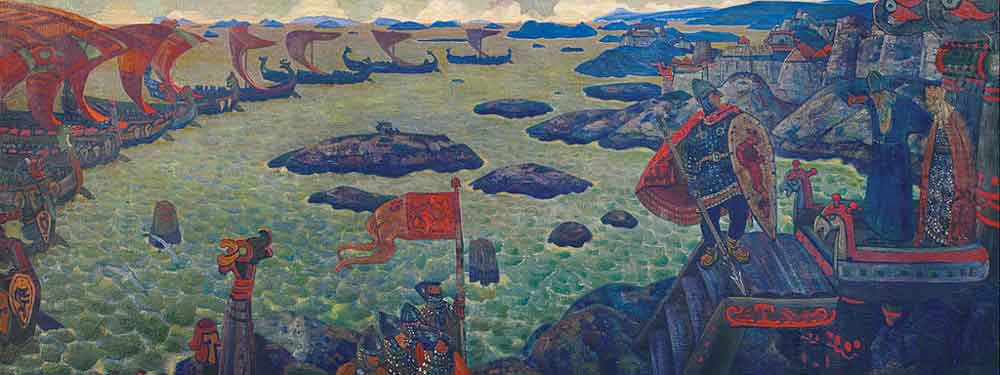
The Varangian Guard was not a typical military unit. Made up of foreign mercenaries who took an oath to the emperor, these were the elite who were tasked with protecting him. Handpicked, the Byzantines trusted these warriors, many of them Norse, more than their own native troops. They served as both the imperial bodyguards within the palace and as shock troops on the field, distinguished by their large axes and distinctive armor. A highly disciplined and honorable force, Harald, with his royal blood and battlefield experience, was a perfect fit for the Varangian Guard, and an excellent example of their style of command.
It is said that over the course of nine years as a Byzantine Varangian, Harald Hardrada made his fortune, sending much of it back to Kievan Rus’ for safekeeping in the form of gold. He was a battle-hardened veteran, now experienced in the often Byzantine politics and customs of the Eastern Empire. In his assertiveness and ambition, however, he may have made a few enemies as well. There are several stories, some more reliable than others, that Harald was once imprisoned for a considerable period.
This imprisonment, which may have happened over a dispute with Emperor Michael IV, or as a casualty of palace politics, was said to have been broken by Harald in rather spectacular fashion. Harald was an impressive figure, and by this time in his life, the exiled prince had surely made a name for himself in the Byzantine court.
Saga tradition states that Harald escaped captivity in disguise and fled Byzantium with a payment to cover his absence. Whether this is true or not is uncertain, but it was likely a significant event in his life. The exile Harald had become was no more. Harald Hardrada returned to the north with experience, wealth, fame, and the contacts to claim the kingship. The years spent with the Varangian Guard provided more than just a tactical or strategic advantage. They were a formative experience that turned the hard man from a mercenary exile to a leader who had seen and survived the world, and was ready to rule it.
Return of the Exile: Claiming the Norwegian Throne
In the early 1040s Harald Hardrada at last returned to Scandinavia. He was no longer a disregarded fugitive from Norway, but a rich and battle-hardened commander. Financed by gold from nearly ten years of service in Byzantium, and supported by a small personal retinue, he immediately set about the task of contesting the Norwegian throne.
However, the political situation had changed during his absence. Harald’s nephew, the son of his half-brother Olaf II, King Magnus the Good, had already succeeded to the throne and was already an established and increasingly popular ruler of Norway and Denmark. Hardrada, instead of rebelling, negotiated. He allied himself with Sweyn Estridsson, Magnus’s main political rival in Denmark, and through a combination of force of arms and application of his considerable gold and influence, Magnus was eventually forced to compromise with him.
In 1046 Harald and Magnus reached an agreement to share the rule of Norway. While the arrangement was not to the liking of either man, it settled the matter for the time being and recognized Harald’s claim in a way that did not immediately start a civil war. The sagas relate that Harald Hardrada bought Magnus’s recognition by paying him a large amount of gold, and that it was with his Varangian gold that Harald bought the Norwegian crown.

However, the two men did not truly settle their differences. Magnus was young, an idealist, and popular; Harald was an older man, a pragmatist, and an ambitious autocrat. The two men were not temperamentally suited for sharing power, and despite their legal alliance, or perhaps because of it, their relationship was one of mutual and undeclared hostility. The two men never engaged in open warfare, as Magnus died of unknown causes (possibly illness) in 1047; however, Harald had undisputed rule of Norway.
Harald, not Magnus, was now king of Norway and Denmark; Magnus’s dying wish was that Denmark go to Sweyn, and Harald, at least for the moment, agreed to let Magnus’s death be a loaning of Denmark. However, Harald’s claims to the Danish throne were never surrendered, and Denmark remained the central goal of Harald’s foreign policy for the next several years.
Harald Hardrada was an autocratic monarch in the tradition of his half-brother and his nephew, but he was also a new kind of Norwegian king. His time in the Byzantine and Rus’ court had given him a different idea of the role of the monarch. The Byzantine and Rus’ governments were more centralized and less dependent on the will of the nobility than their Western counterparts.
A rigidly hierarchical military organization, a strong sense of personal loyalty, and the use of force to reduce the power of local chieftains and magnates were all part of Hardrada’s rule. The king hurried to centralize power and reduce the level of independence of local strongmen to a more acceptable degree. Harald was not a particularly lenient ruler, hence his epithet, “hard ruler”. Harald Hardrada’s ideas and experience made him, on the whole, a distinct kind of king from his predecessors.
Harald Hardrada, the king, was not the same man who fled Stiklestad wounded and exhausted nearly forty years previously. He had returned a different man, a veteran of wars and court intrigue in lands far from Norway, and used his force, as well as his wealth, prestige, and negotiating skills, to achieve his goal. However, if the return to Norway marked a kind of homecoming, it was also a transformation. Harald Hardrada had come home to Norway a changed man, and with the kingdom now in his hands, his sights were already turning westward again, to conquest and new glory, and a last, fateful gamble in the west.
The Reign of the Hard Ruler
Harald Hardrada’s reign was spent stabilizing a kingdom scarred by civil war and foreign domination. Ascending to undisputed rule of Norway in 1047, Hardrada, a man of action, sought to solidify his grip on the realm. Harsh by nature, he was not one to share power easily. His rule was centralized and strict; the old independence of local chieftains was not tolerated. Harald viewed dispersed authority as a threat to his power and moved decisively to expand the monarchy’s reach throughout Norway. Order was to be prized over popularity, and Harald would be both respected and feared for this policy.
To enforce his will and maintain control over a fractious kingdom, Harald continued the reforms of his predecessors by which royal authority took precedence over local loyalties. He increased the number of royal appointees to administer districts and bring the weight of the crown’s law to the farthest reaches of the realm. His word was law, and once a decision was made, it was final. Harald was known as a harsh man who “tolerated no opposition” and whose power as king derived from “total command without dispute.”
These policies and reforms slowly began to transform Norway from a loose patchwork of regional identities into a unified state. Harald also used raids and full-scale military campaigns to solidify his control over Norway and lay claim to other lands. For more than a decade, Harald raided and campaigned in Denmark against King Sweyn Estridsson, who had successfully claimed the Danish throne. Harald never held Denmark as a vassal kingdom, but his frequent raids undermined Danish rule and allowed him to dominate important trade routes in the Baltic.
These wars funded Harald’s rule in Norway and extended his influence across the region. Norway’s naval power, honed during Harald’s years in foreign courts, was an unrivaled force on the seas during his reign and for many years to come.

Harald is best remembered for his military campaigns, but he also impacted Norway’s civic and cultural development during his decade-long rule. Encouraging by example, having served in many foreign courts, he advanced the construction of stone churches and the development of new market towns to serve growing populations in cities like the coastal capital of Nidaros (now Trondheim). Harald’s court attracted skalds (poets) and craftsmen and skilfully commissioned art, for he himself was a skilled poet in the skaldic verse tradition, suggesting a man who, in addition to being fierce, was also intellectual.
Order under law was a high priority for Harald Hardrada, who championed the centralization and codification of regional regulations and practices. A streamlined system of justice could be dispensed under closer royal supervision and without the patchwork variations and local protections of earlier decades. Norway still did not have a single law code, but these efforts at centralization and reform sowed the seeds for greater standardization later in the Middle Ages. Harald also improved Norway’s roads, bridges, and fortifications, part of an effort to control the countryside, secure the realm, encourage trade, and end internal conflict, which he would be known for after his reign.
By the mid-1060s, Harald Hardrada was one of Europe’s most battle-tested and experienced kings. He was well-respected, feared, and, like all men, he grew restless as time passed. Norway was secure, and the Danes, having weathered the storm of Harald’s depredations, were still formidable but clearly beatable. It was time to look abroad for another great conquest. The next campaign would be the boldest yet—and it would also be his last.
The Final Gamble: Invasion of England
The invasion of England was perhaps the most audacious thing Harald Hardrada ever attempted. Although he had a legal claim to the English throne, his justification for the invasion was shaky at best. He based his claim on an agreement made in 1038 between Magnus the Good and Harthacnut, king of England, that if one of them died without an heir, the other would inherit the other’s kingdom. However, Magnus never made a serious attempt to take England, and Harald was the successor of Harthacnut, not Magnus.
Nonetheless, Harald saw an opportunity to press the claim after the death of Edward the Confessor and the disputed succession that followed. He was not alone in this endeavor: his co-commander Tostig Godwinson was Edward’s brother-in-law and Harold Godwinson’s brother. He was previously the Earl of Northumbria but had been driven out in a rebellion and sought to regain his position. Tostig had plenty of reasons to join Harald. As such, they were joined by about 300 ships and sailed for England, north to Tostig’s earldom, where he still had strong support. Harald and Tostig landed in the north, somewhere near the River Humber, and began marching inland.
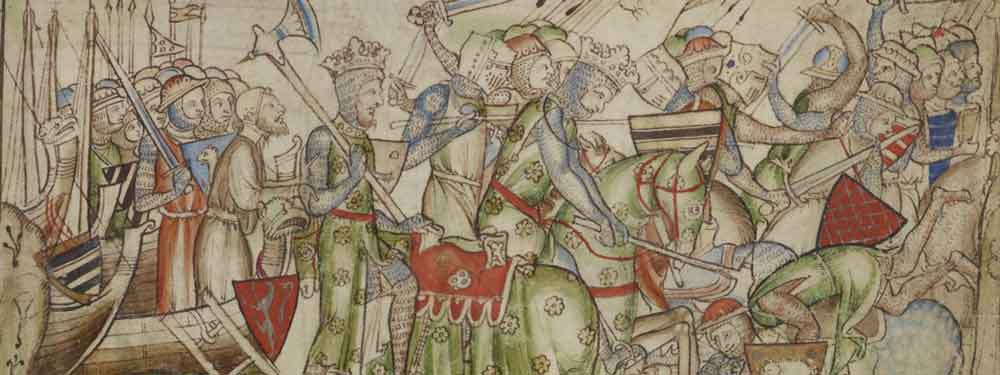
The first confrontation was the Battle of Fulford Gate on 20 September 1066, in which Harald Hardrada and Tostig Godwinson defeated the earls of the north, Edwin and Morcar, in a fierce battle that opened the north of England to Norse occupation. The battle was short and decisive, which greatly encouraged Harald, and after having received the submission of York, he decided to wait for the rest of his fleet to arrive before moving on. The victory was not to last long. Five days later, King Harold Godwinson was marching north to stop the Norwegian advance.
The king, who had heard of the Norwegian landing, had done the seemingly impossible. He and his army had marched almost 200 miles in less than a week. On 25 September 1066, they caught the Norwegian army by surprise at the Battle of Stamford Bridge. Many of Harald’s men were not in full armor: they had left much of their gear behind when they had marched south in the warm weather and were ill-prepared for battle. However, the Norsemen soon regrouped and put up a good fight. The Anglo-Saxon Chronicle described it as follows: “there was a very fierce battle on both sides”.
The two kings, Harold Godwinson and Harald Hardrada, led from the front. The Norse sources claim that Harald fought with typical ferocity: when an arrow pierced his throat, killing him, he did not fall immediately. He was the last of his kind. Tostig had also been killed, and all the survivors were taken prisoner. The Norwegian army had been utterly destroyed; so much so that only half of the returning Norwegian ships could be crewed by men who had survived Stamford Bridge. The Chronicle later described it as “there never was a greater slaughter in this land of a heathen folk.” The Viking Age began nearly three centuries before, but with Harald Hardrada’s death, it ended.
The invasion of England was Harald’s last gamble. As ever, it was a bold, risky move, but this time the stakes could not have been higher. It would be his last battle: after his death at Stamford Bridge he was buried in the town church, before his embalmed body was sent back to Norway for reburial. For the last Viking king, it was an appropriately epic, if ignominious, end.
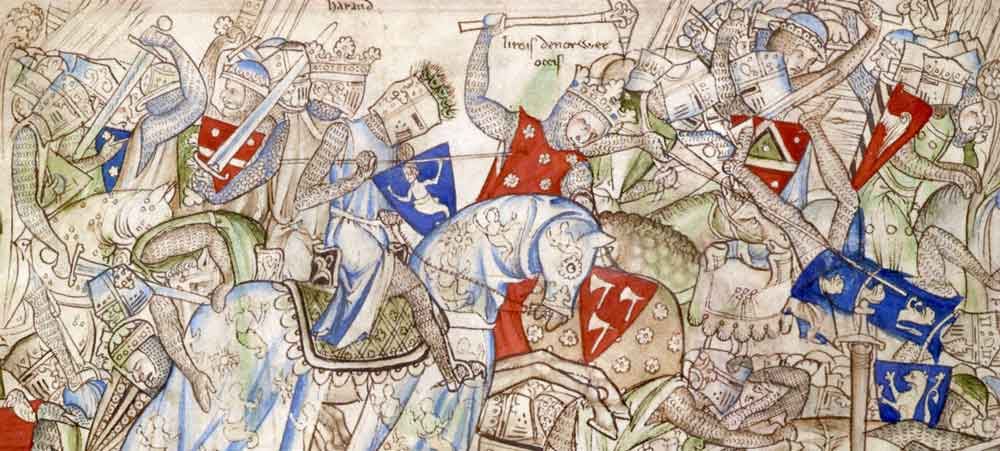
Legacy: The Last Great Viking King
The death of Harald Hardrada at the Battle of Stamford Bridge was a significant event not only for the end of his campaign but also because it symbolized the closing of the Viking Age. Harald had lived a life filled with Norse spirit, exploring, raiding, and claiming kingdoms. His death marked the decline of Viking invasions and the power that had dominated parts of Europe and other regions for centuries. After Harald, no other Viking leader would emerge with comparable global influence or military reach.
Harald’s influence persisted in Scandinavia, shaping the identity of the Norwegian crown for generations to come. His rule and life were regarded with admiration by later Norwegian and Danish kings, who frequently sought to emulate his strong, centralized monarchy and military prowess. His conquest of England might have failed, but internally, he left Norway more united and robust than he found it. His strong will and leadership continued to shape the identity of the Norwegian monarchy long after his death.
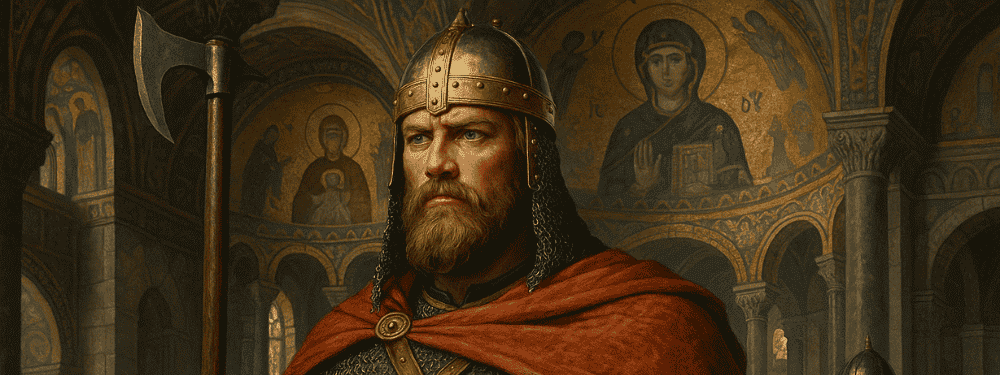
Harald was also a great subject in Norse literature. The Heimskringla and Icelandic sagas portray him as a skilled poet and warrior, his deeds on and off the battlefield. These sagas and tales about Harald Hardrada, whether exaggerated or not, have helped keep the image of the old Norse king alive in popular culture. He was a part of the cultural memory of the Norse world, as well as an adventurer who lived the life.
In more recent times, the figure of Harald Hardrada has been represented in various historical novels, documentaries, and even video games. This has helped to cement his image as a larger-than-life figure—complex and multifaceted, embodying the best and worst of his time. He is often seen as the quintessential Viking king, a man who had an influence both in the East and the West, and who was as much a poet as he was a warrior. His rise from a wanderer to an emperor’s bodyguard and finally to the king of Norway is a story few other medieval rulers can claim.
Harold Hardrada’s death is frequently juxtaposed with the victory of William the Conqueror at the Battle of Hastings, which took place three weeks later. While Harald died on the battlefield in England, William, a duke from Normandy, was crowned the new King of England, thereby changing the future of Britain. However, Harald’s invasion, though ultimately unsuccessful, weakened Harold Godwinson’s forces and may have paved the way for William’s victory. In this sense, even in defeat, Harald had a significant impact on English and European history.
In death, Harald Hardrada’s reputation only grew in stature as he was remembered not only for how he died but for how he lived. He lived the life of a Viking to the fullest, across the known world, and met his end in a last Viking stand. He has since been celebrated in song and story, and his memory will continue to live on for years to come.


